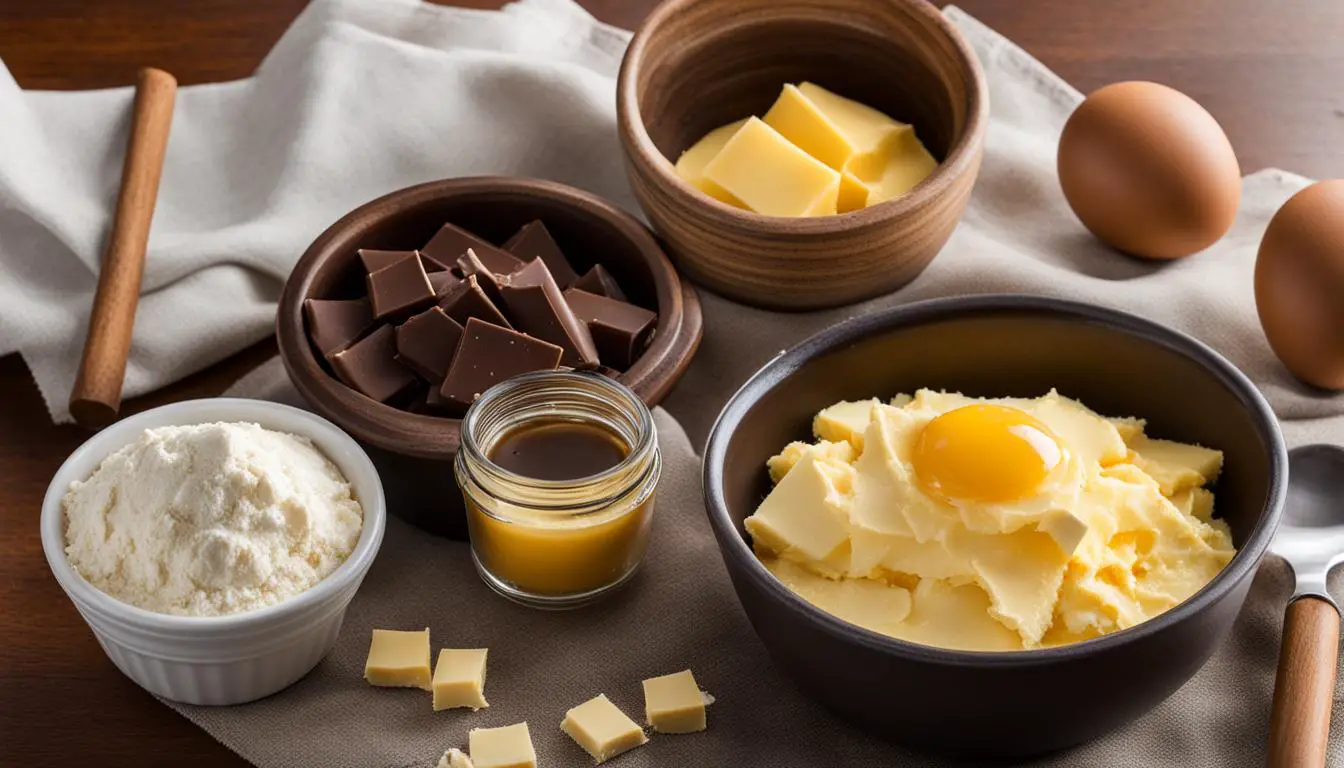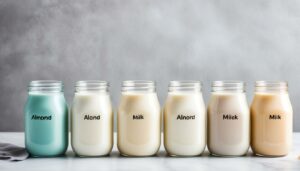Are you ready to whip up some mouth-watering cookies but unsure where to start? Look no further! In this article, we will guide you through the essential ingredients required to make the perfect batch of homemade cookies.
Whether you’re a baking newbie or a seasoned pro, creating delicious cookies requires the right ingredients. From flour and sugar to eggs and butter, each component plays a crucial role in the texture, taste, and overall success of your cookie recipe.
To help you get started, we’ll take a closer look at the fundamental ingredients while also exploring additional flavor enhancers, sweeteners, binding agents, leaveners, and mix-ins to take your cookies to the next level.
Contents
- 1 Understanding the Basic Cookie Ingredients
- 2 Exploring Flavor Enhancers
- 3 The Sweeteners
- 4 The Binding Agents
- 5 Adding Texture and Crunch
- 6 The Leaveners
- 7 Mix-ins and Toppings
- 8 Conclusion
- 9 FAQ
- 9.1 What are the essential ingredients needed for a cookie recipe?
- 9.2 Can I use alternative sweeteners in my cookie recipe?
- 9.3 Are there any gluten-free options for cookie recipes?
- 9.4 Can I add additional flavors to my cookies?
- 9.5 How can I make my cookies chewy and crispy?
- 9.6 What are some popular mix-ins and toppings for cookies?
- 9.7 Can I freeze cookie dough for later use?
Key Takeaways
- The essential ingredients in a cookie recipe include flour, sugar, eggs, and butter
- Additional flavor enhancers like vanilla extract and spices can elevate the taste of your cookies
- Different sweeteners like granulated sugar and honey can impact the texture and taste of your cookies
- Binding agents like eggs and butter are necessary to hold your cookie dough together
- Adding mix-ins like nuts and chocolate chips can add texture and crunch to your cookies
Understanding the Basic Cookie Ingredients
Baking cookies can be an enjoyable and rewarding experience. One of the keys to creating mouth-watering cookies is understanding the basic cookie ingredients that form the foundation of any cookie recipe. Let’s take a closer look at these essential baking ingredients:
Flour
Flour is the backbone of cookie dough, responsible for providing structure and texture to your cookies. All-purpose flour is the go-to choice for most cookie recipes, but you can experiment with other types of flour, such as bread flour or cake flour, to achieve different textures.
Sugar
Sugar adds sweetness to cookies, but it also plays a crucial role in their texture and color. Granulated sugar is the most commonly used type of sugar in cookie recipes, but you can also use brown sugar for a richer flavor and softer texture. Powdered sugar is used for dusting or making frosting.
Butter
Butter is a fundamental ingredient in cookie baking, providing flavor and richness to the dough. When choosing butter, always use unsalted butter to control the salt content in your recipe. Make sure to soften the butter before using it in your dough to ensure even mixing.
Eggs
Eggs add moisture and richness to cookie dough. They also act as a binding agent, holding the dough together. Most cookie recipes call for large eggs, but you can experiment with using different sizes and see how it affects the texture of your cookies.
Salt
Salt may seem like a small ingredient, but it plays a significant role in balancing the sweetness and enhancing the flavor of your cookies. You can use table salt, sea salt, or kosher salt, and adjust the amount based on your personal taste preferences.
Baking Soda and Baking Powder
These two leavening agents are essential in making cookies, as they help the dough rise and create a light, airy texture. Baking soda is used in recipes that contain acidic ingredients such as buttermilk or brown sugar, while baking powder contains both an acid and a base and is used in a variety of cookie recipes.
Now that you’ve learned about the basic cookie ingredients, you’re ready to start baking! Grab your baking ingredients and head to the kitchen for some sweet and delicious treats!
Exploring Flavor Enhancers

Looking to create truly delicious cookies? Consider adding some flavor enhancers to your baking recipe! These ingredients help elevate the taste profile of your cookies, making them stand out from the rest.
One of the most common flavor enhancers is vanilla extract. This simple ingredient adds a warm, sweet flavor to cookies, making them taste more complex and satisfying. You can also experiment with other extracts, like almond or peppermint, to add unique flavors to your cookies.
If you’re a fan of chocolate, try adding cocoa powder to your cookie recipe. This ingredient can make your cookies taste rich and decadent, perfect for satisfying any chocolate cravings. You can also mix in chocolate chips or chunks for an extra dose of chocolaty goodness.
Another way to add flavor to your cookies is by using spices. Cinnamon, nutmeg, and ginger are all popular choices that add warmth and depth to baked goods. Try sprinkling these spices into your cookie dough before baking for a deliciously spiced cookie.
Looking for something a little more unique? Consider experimenting with less traditional flavor enhancers, like lavender or cardamom. These ingredients can add a subtle, sophisticated flavor to your cookies that will impress any palate.
“Adding flavor enhancers is a great way to take your cookie recipe to the next level. From vanilla extract to unexpected ingredients like lavender, these additions can make your cookies truly unforgettable!”
The Sweeteners

There are several sweeteners used in a cookie recipe, and each one will give a different texture and taste to your homemade cookies.
Granulated sugar is the most common sweetener used in baking cookies. It provides sweetness and helps to tenderize the dough. Brown sugar contains molasses, which gives a deeper flavor and moisture to the cookies. Alternative sweeteners such as honey or maple syrup can be used in place of sugar for a healthier alternative. They add a distinct flavor to the cookies and can make them softer and chewier.
When substituting sweeteners, keep in mind that it can affect the texture of the cookies. So if you want to make a low-sugar cookie recipe, be sure to use a recipe that has been tested and optimized for alternative sweeteners.
The Impact of Sweeteners on Cookie Texture
| Sweetener | Texture in Cookies |
|---|---|
| Granulated Sugar | Crunchy with some chew to it |
| Brown Sugar | Chewy and moist |
| Honey | Softer and chewier than cookies made with granulated sugar |
| Maple Syrup | Softer and chewier than cookies made with granulated sugar |
Tip: For an extra burst of flavor, add a sprinkle of cinnamon or nutmeg to the sugar before incorporating it into your cookie dough.
The Binding Agents
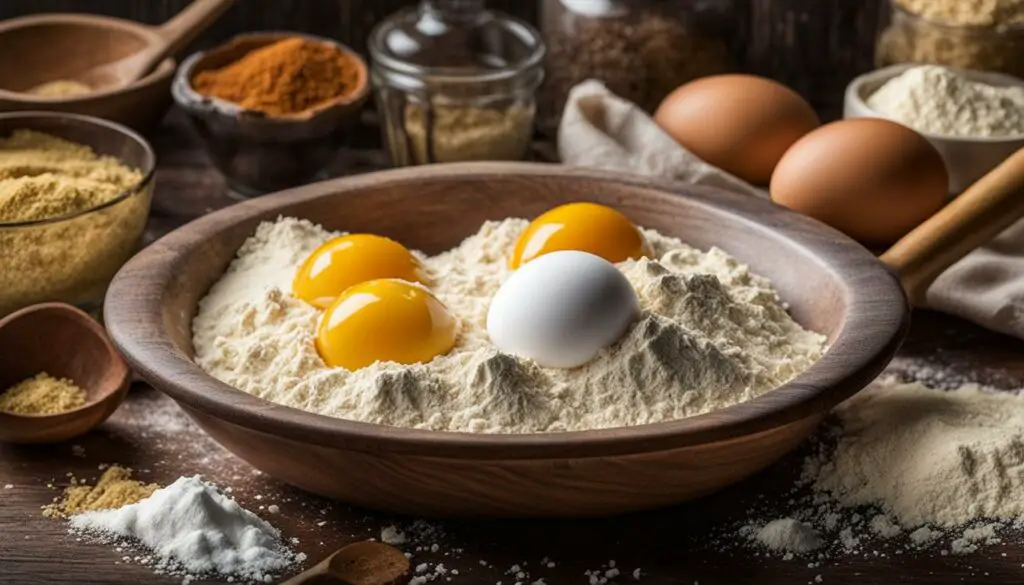
The binding agents are crucial to create a perfect texture for your homemade cookies. These ingredients interplay to ensure that your cookies are neither too soft nor too brittle. Here are a few ingredients that serve as critical binding agents in your cookie recipe:
| Ingredients | Function |
|---|---|
| Eggs | Eggs act as a binding agent, helping the cookie dough hold together. They also provide moisture to the dough. |
| Butter | Butter binds dry ingredients together, giving the cookies a soft, chewy texture. |
| Shortening | Shortening helps the dough hold together, producing a crumbly texture. It works well with ingredients like sugar, which can be overpowering when combined with butter. |
If you are looking for an easy cookie recipe, using eggs and butter is your best bet. They create a fantastic combination that blends well with other ingredients. If you are looking to experiment with other ingredients, try incorporating shortening into your dough. The shortening will provide a different texture, giving you a biscuit-like cookie.
Now that you know about the binding agents, you can experiment with their combinations to create your perfect cookie recipe. Use these ingredients in varying amounts and combinations until you find the ideal recipe that suits your taste buds.
Adding Texture and Crunch
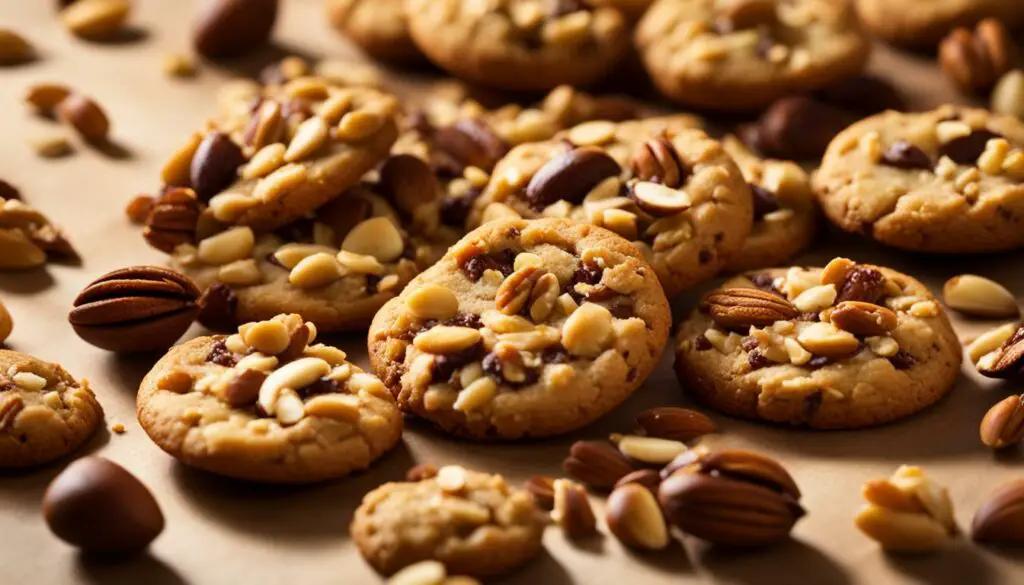
Texture and crunch are what make a cookie go from good to great. Adding mix-ins like nuts, oats, or chocolate chips can make all the difference. Here are some tips for incorporating texture and crunch into your cookies:
- Chopped nuts like almonds, pecans, or walnuts add a satisfying crunch to your cookies. Toast them beforehand for extra flavor.
- Oats are an excellent addition to any cookie recipe. They add a chewy texture and a nutty flavor.
- For chocolate lovers, chocolate chips are an obvious choice. But consider using different types of chocolate for added depth and complexity.
- Other mix-in ideas include dried fruits, coconut flakes, or even pretzels for a salty bite.
When adding mix-ins, keep in mind that they can affect the consistency of your dough. If it’s too dry, add a bit of liquid like milk or water. If it’s too wet, add a bit more flour until you reach the desired consistency.
Another way to add crunch to your cookies is by using toppings. Some popular choices include:
- Sprinkling coarse sea salt on top of chocolate chip cookies for a sweet and salty flavor combination.
- Drizzling melted chocolate on top of sugar cookies for a decorative touch.
- Garnishing oatmeal cookies with cinnamon sugar for an extra layer of flavor.
Experiment with different mix-ins and toppings to find your favorite flavor combinations. The possibilities are endless!
The Leaveners
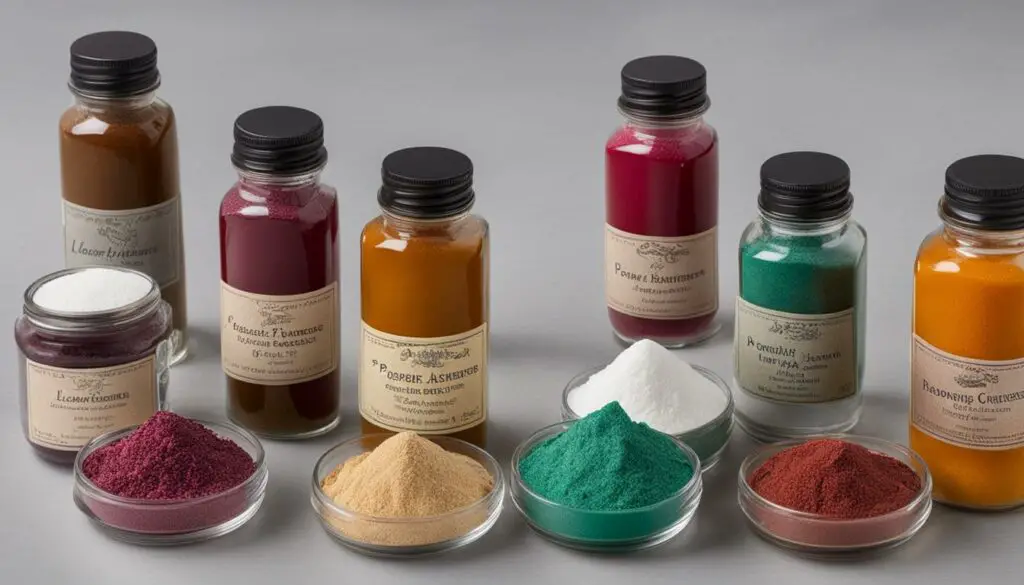
Leaveners are a crucial ingredient in any cookie recipe, as they help the dough rise and create a tender, fluffy texture. Baking soda and baking powder are the most common leaveners in cookie recipes. Baking soda is a base that reacts with acidic ingredients like brown sugar or buttermilk, producing carbon dioxide bubbles that cause the dough to rise. Baking powder, on the other hand, contains both a base and an acid, so it can be used in recipes that don’t include acidic ingredients.
It’s important to use the right amount of leavener in your recipe to achieve the desired texture. Too much baking soda or baking powder can cause the dough to rise too much and then collapse, resulting in flat, dense cookies. On the other hand, using too little leavener can result in cookies that are tough and dense.
If you’re looking to experiment with different leavening agents in your cookie recipe, try using cream of tartar or yeast. Cream of tartar is an acidic powder that can be used in place of baking powder, while yeast produces carbon dioxide through fermentation, resulting in a lighter, fluffier texture.
“When it comes to leaveners in cookie recipes, less is often more. It’s always better to use too little than too much, as excess leavener can ruin the texture of your cookies.”
Mix-ins and Toppings

Are you ready to take your cookie game to the next level? Adding mix-ins and toppings is an excellent way to give your homemade cookies a personal touch. Here are some fun and delicious ideas to upgrade your recipe:
| Ingredient | Description |
|---|---|
| Chocolate chips | Classic and popular choice. Choose milk, dark, or white chocolate for different flavor profiles. |
| M&Ms | The colorful candy coating adds a pop of brightness and crunch. |
| Nuts | Chopped walnuts, pecans, or almonds add a nutty and earthy flavor with a pleasant crunch. |
| Dried fruits | Raisins, cranberries, or cherries bring a chewy and sweet taste to your cookies. |
| Candies | Cut-up pieces of candy bars, gummies, or caramels can give your cookies a unique and exciting taste. |
| Sprinkles | Colorful and fun, sprinkles can instantly transform plain cookies into a festive and playful treat. |
| Drizzles | Melted chocolate, caramel, or honey can be added on top of the cookies to give them a sweet and decadent touch. |
Remember that the possibilities are endless! Mix and match different kinds of toppings to create new and exciting flavors. Make sure to taste-test along the way until you find the perfect combination that suits your taste buds.
Adding mix-ins and toppings can also be a fun activity to do with your family and friends. Get creative and have fun experimenting with new recipes and ideas. Happy baking!
Conclusion
Cookies are a beloved treat for people of all ages, and making them at home is a fun and rewarding experience. With this guide, you have learned about the essential ingredients that make a tasty cookie recipe. Remember to use high-quality ingredients and follow the recipe closely to achieve the best results.
Experiment with Different Combinations
Now that you know the basic ingredients and techniques for baking delicious cookies, it’s time to get creative and experiment with different combinations. Try adding your favorite mix-ins or toppings to your cookie dough for a unique flavor and texture. You can also vary the cooking time or temperature to achieve a softer or crisper cookie, depending on your preferences.
Savor the Results
After you’ve made your cookies, take some time to savor the results. Nothing beats the taste of a warm, freshly baked cookie. Share your cookies with friends and family, or enjoy them as a tasty snack whenever you need a sweet pick-me-up.
Now that you know how to make delicious cookies at home, there’s no need to rely on store-bought treats. Impress your loved ones with your baking skills and enjoy the satisfaction that comes with creating something from scratch. Happy baking!
FAQ
The essential ingredients for a cookie recipe typically include flour, sugar, butter, eggs, and baking soda or baking powder. These ingredients form the base of most cookie recipes and are necessary for creating delicious homemade cookies.
Yes, you can use alternative sweeteners like honey or maple syrup instead of granulated sugar or brown sugar. Just keep in mind that using different sweeteners may impact the texture and taste of your cookies.
Absolutely! There are various gluten-free flour alternatives available, such as almond flour or rice flour, that can be used in place of regular flour in cookie recipes. You can also find gluten-free oats and other ingredients specifically labeled as gluten-free.
Yes, you can add additional flavors to your cookies to enhance the taste. Ingredients like vanilla extract, cocoa powder, or spices can elevate the flavor profile of your cookies and make them even more delicious.
To achieve a balance of chewiness and crispness in your cookies, pay attention to the proportions of ingredients like eggs and butter. Adding extra eggs can make cookies chewier, while using more butter can make them crispier. Experimenting with baking times and temperatures can also help achieve the desired texture.
Popular mix-ins for cookies include chocolate chips, nuts, dried fruits, or shredded coconut. As for toppings, you can drizzle melted chocolate, sprinkle powdered sugar, or even add a scoop of ice cream on top of your freshly baked cookies.
Absolutely! Freezing cookie dough allows you to have freshly baked cookies whenever you want. Simply scoop the dough onto a baking sheet, freeze until solid, then transfer the frozen dough balls to a freezer bag. When you’re ready to bake, place the frozen dough balls on a baking sheet and add a couple of extra minutes to the baking time.

